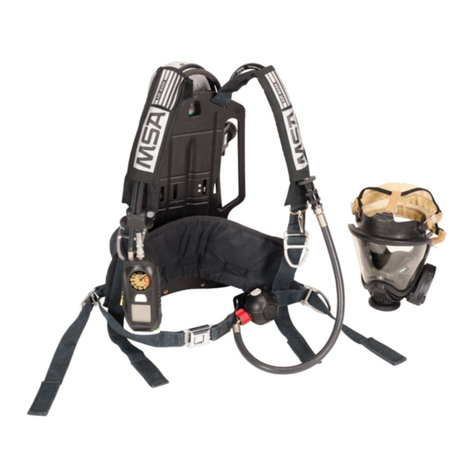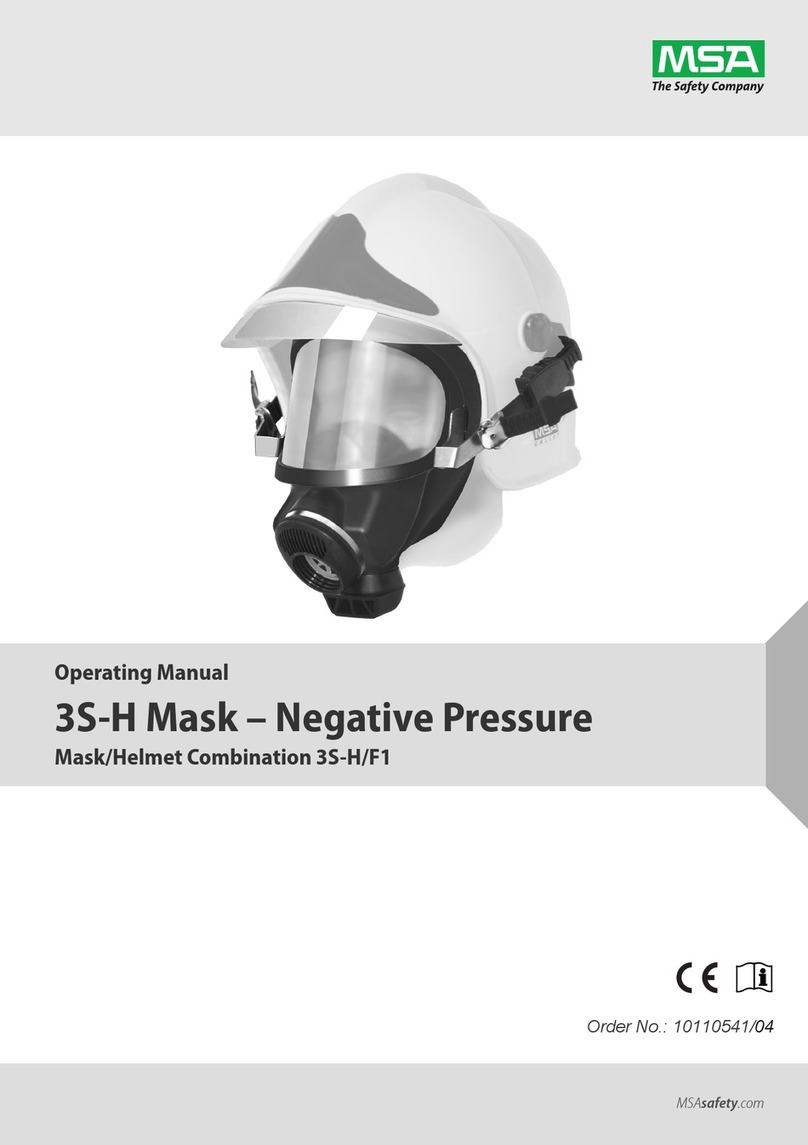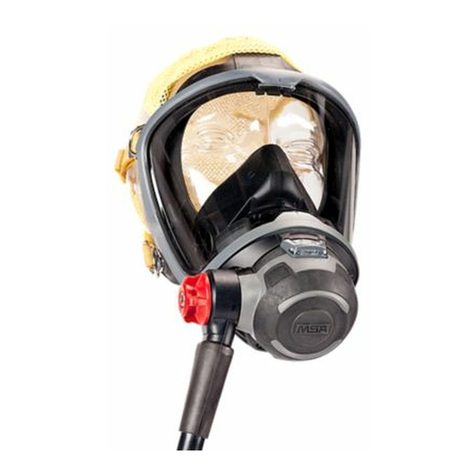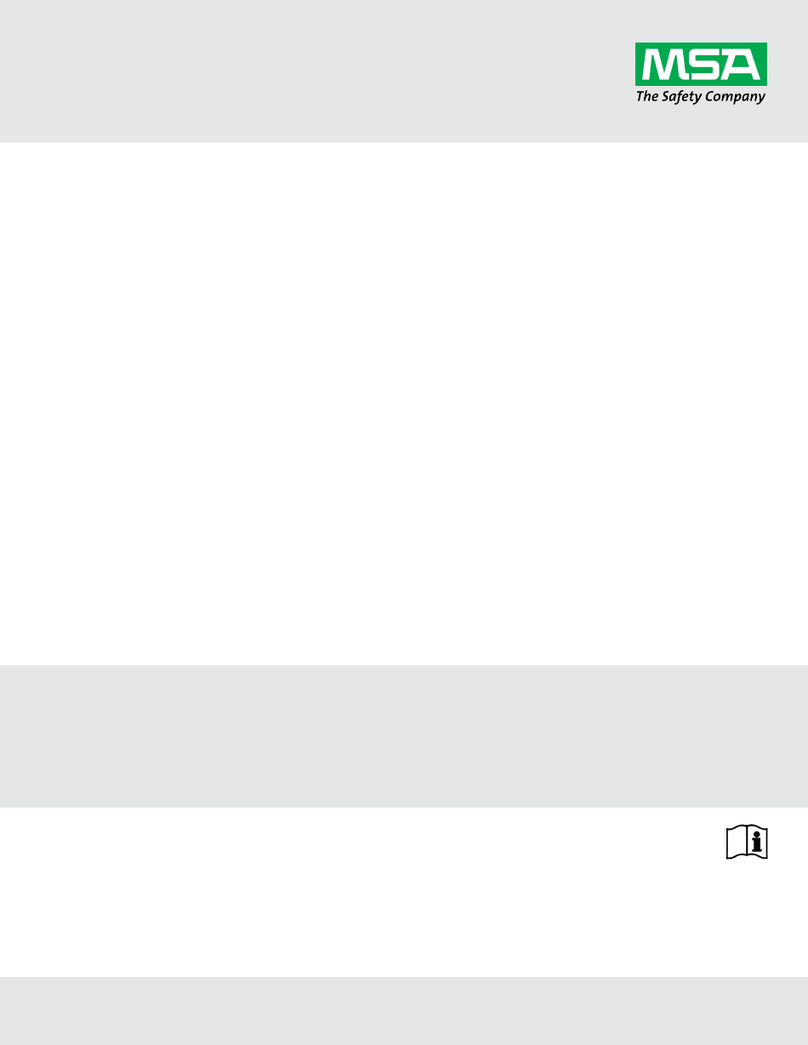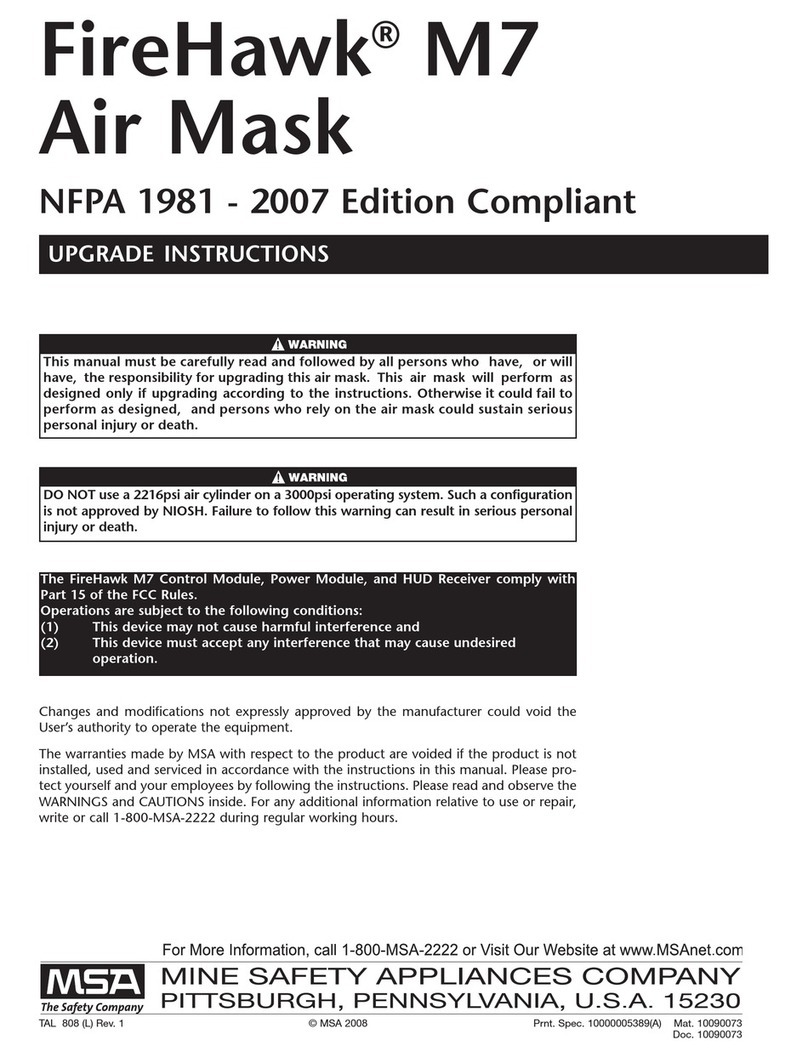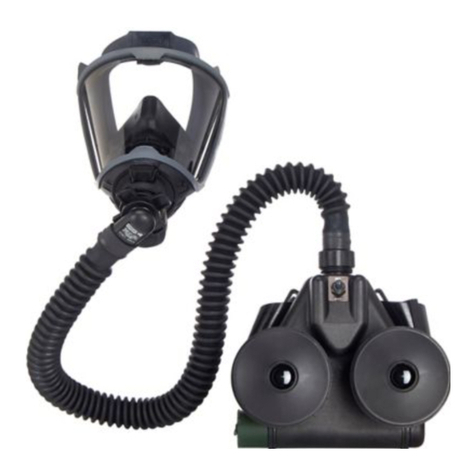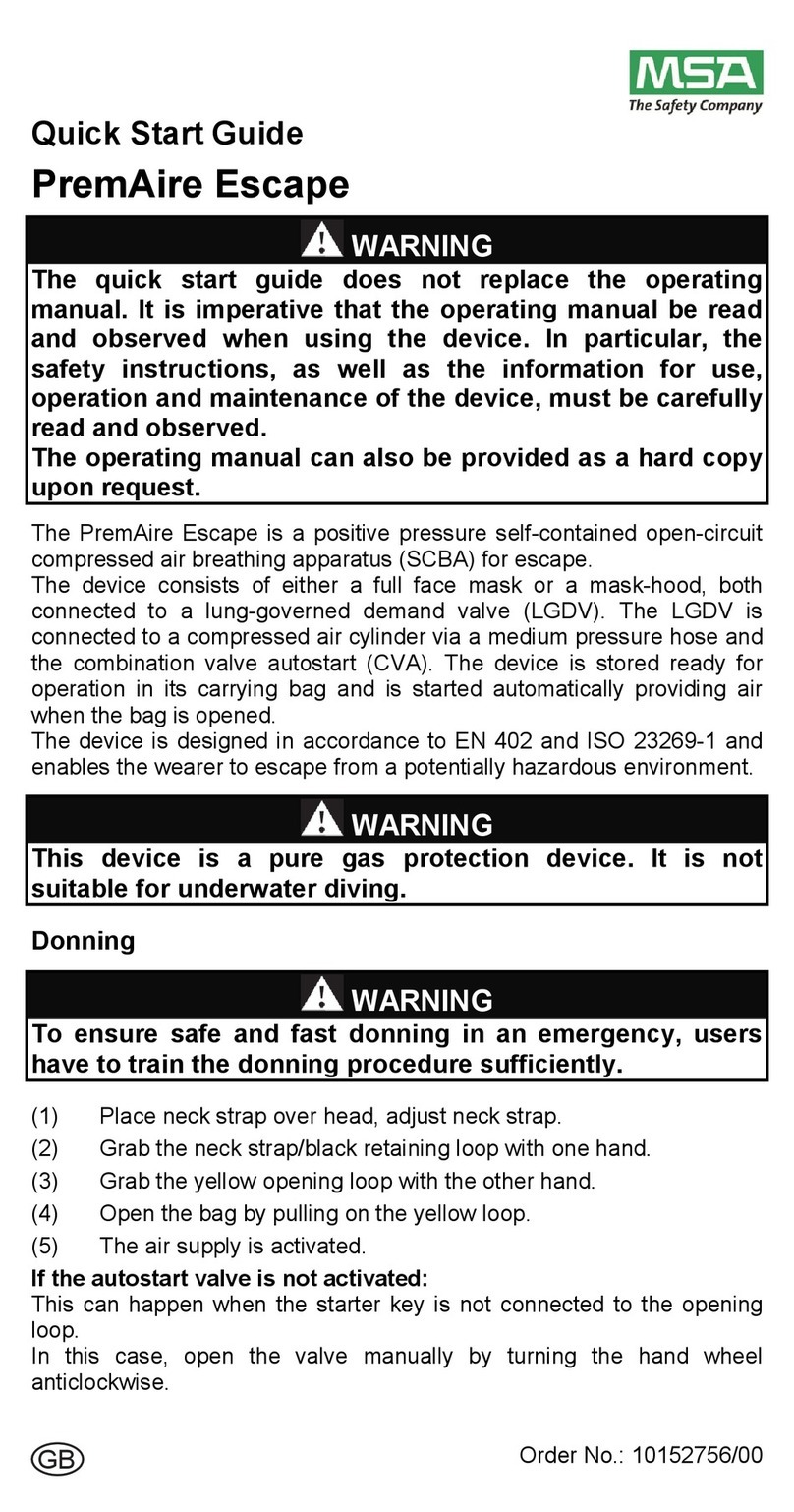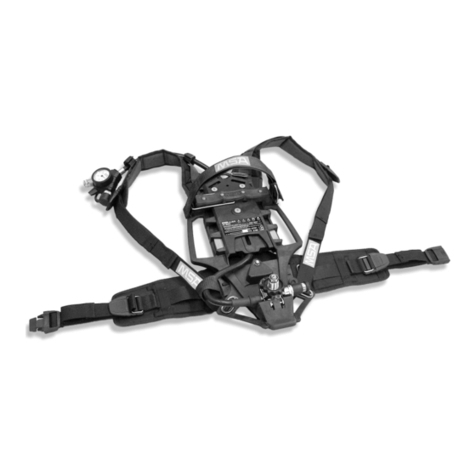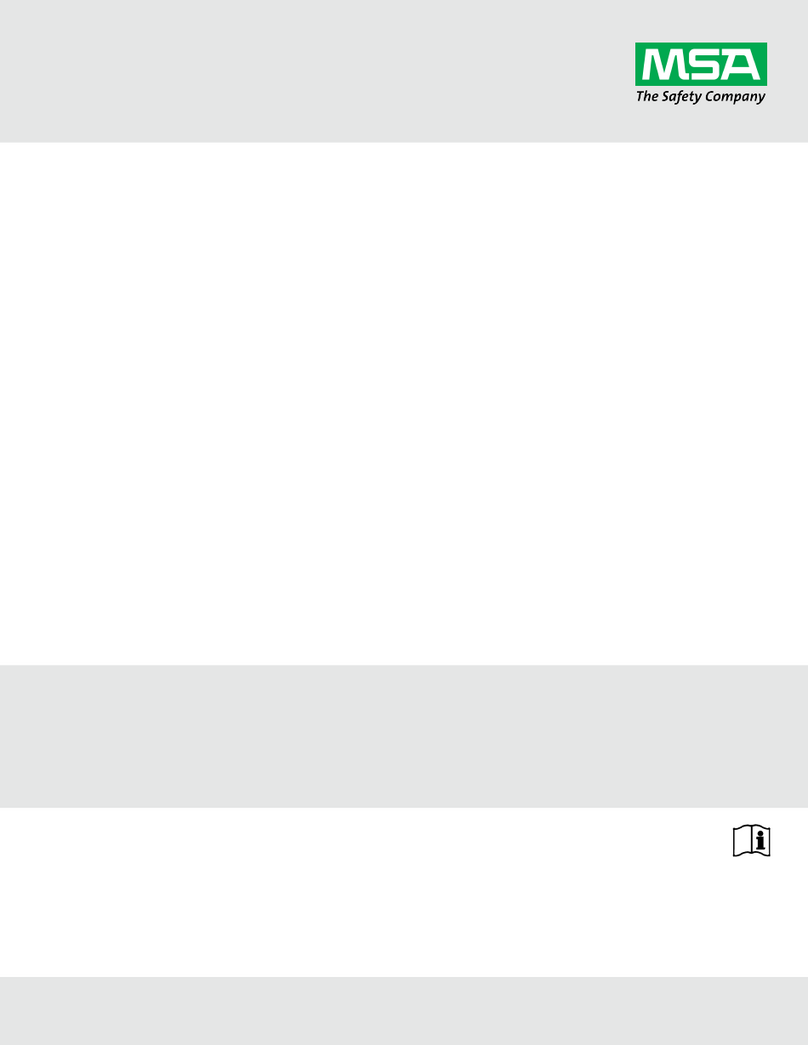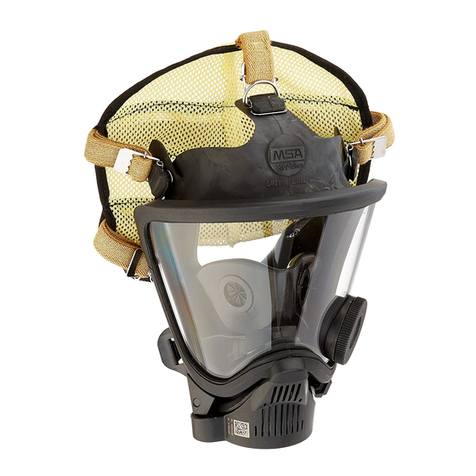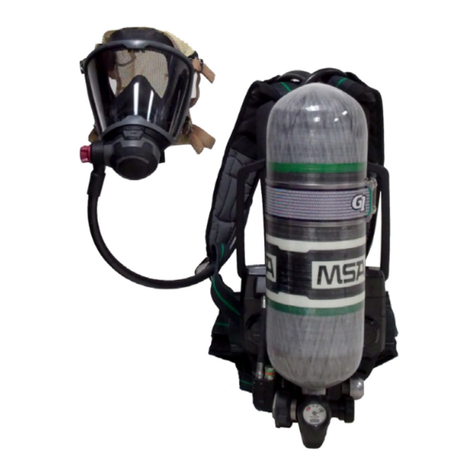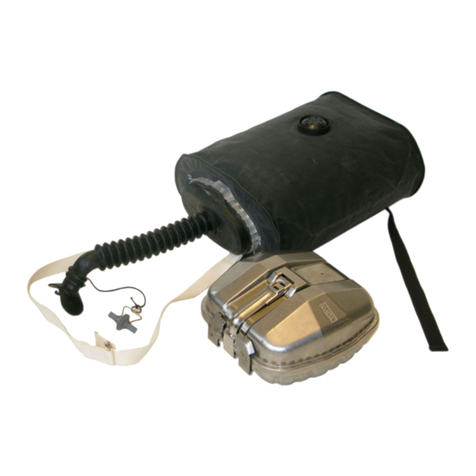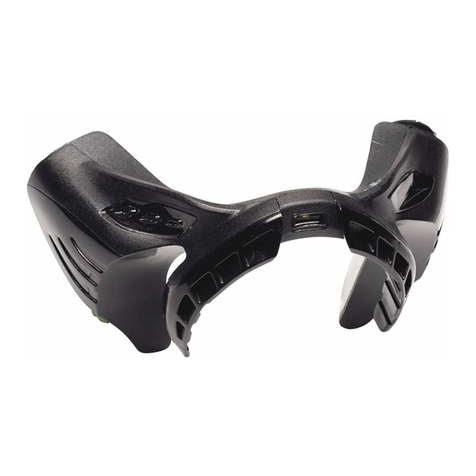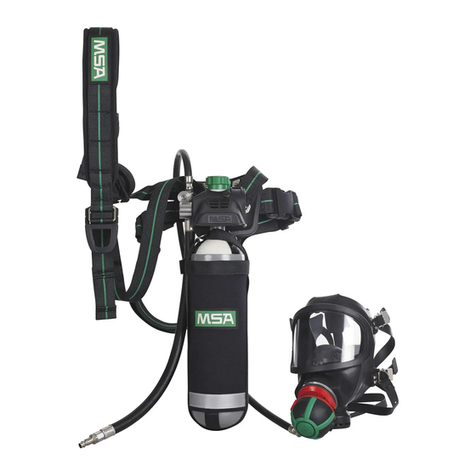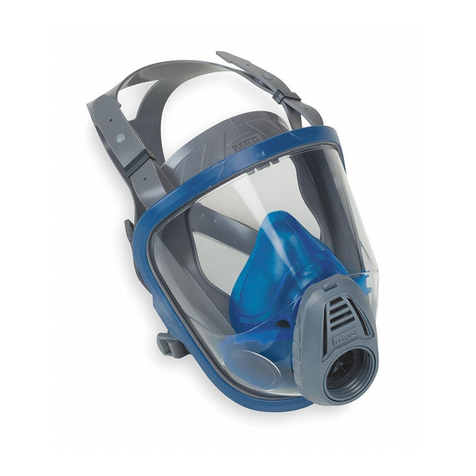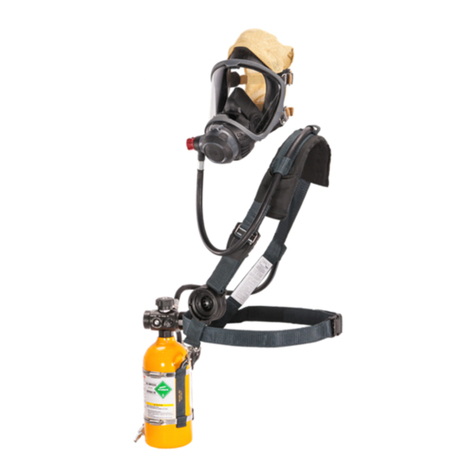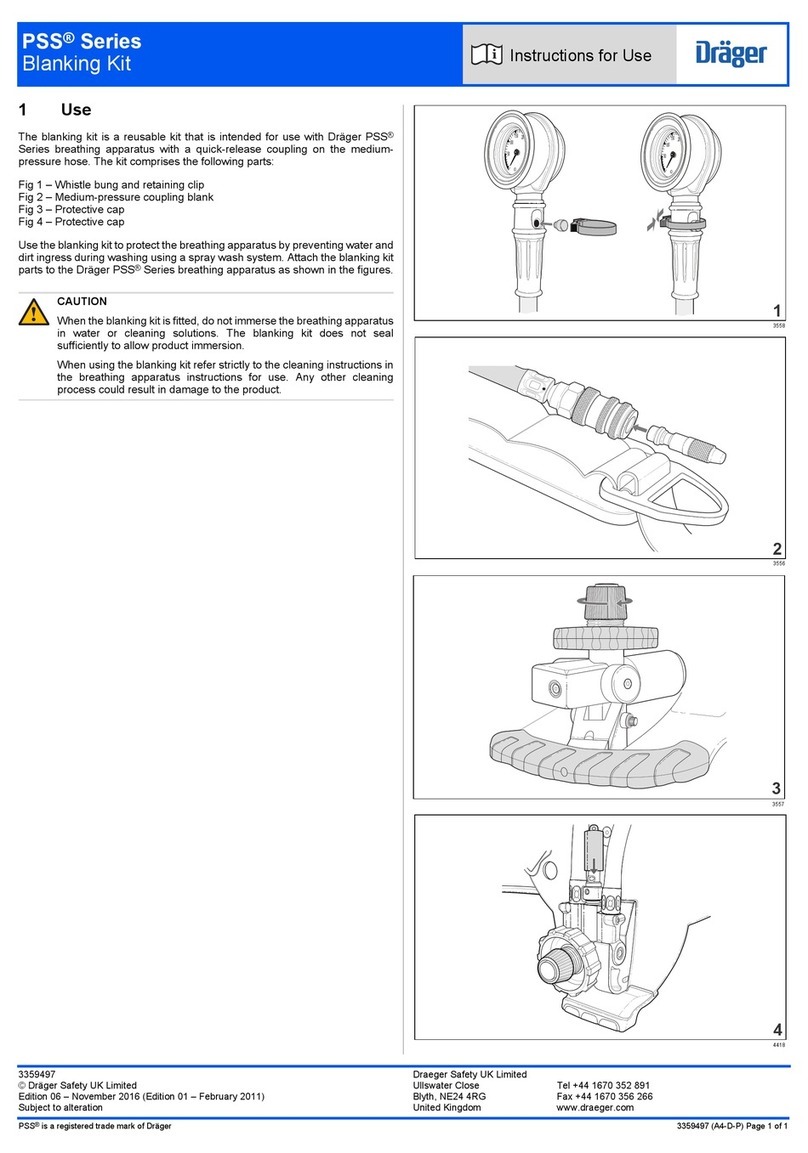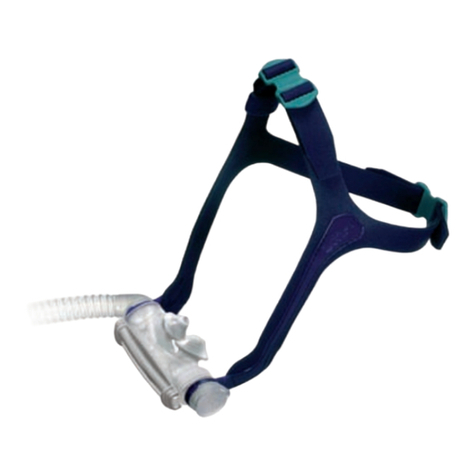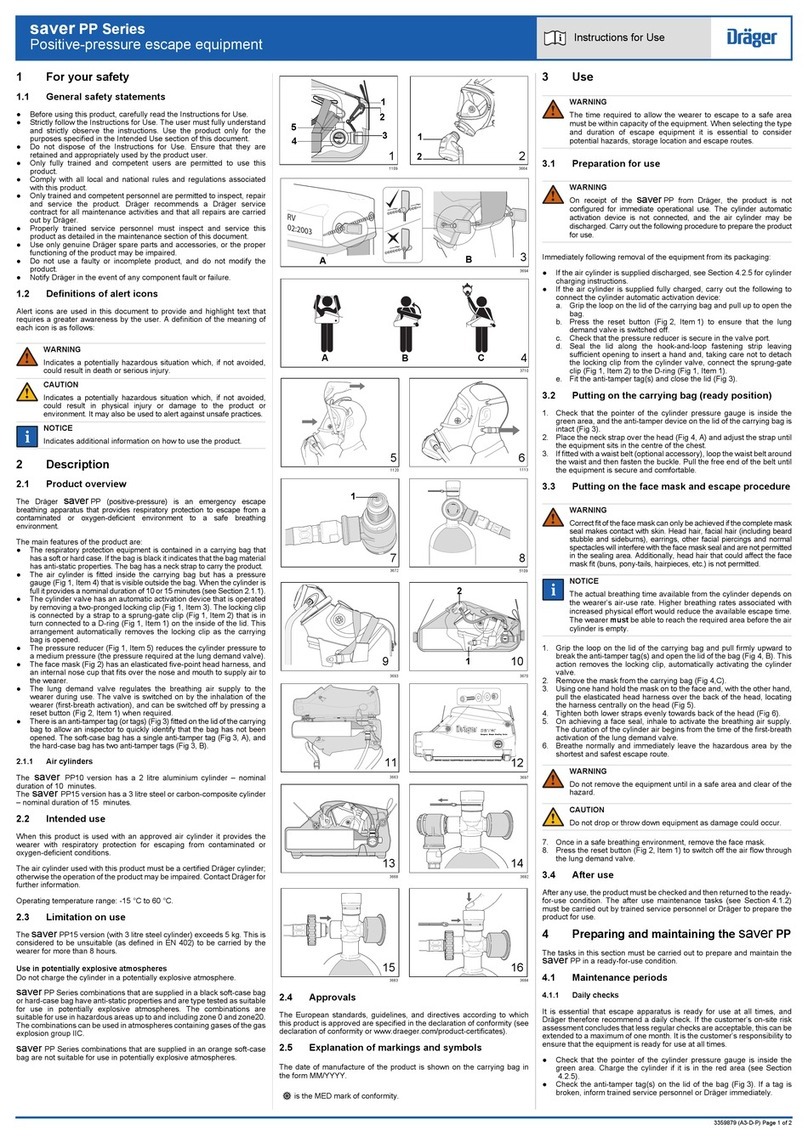
INTRODUCTION
• Reorient or relocate the receiving antenna.
• Increase the separation between the equipment and
the receiver.
• Connect the equipment into an outlet on a circuit dif-
ferent from that to which the receiver is connected.
• Consult the dealer or an experienced radio/TV techni-
cian for help.
Approval is maintained while transfilling air only if MSA
Quick-Fill Hose Assembly 485331 or 485332 is used.
Include 488703 cylinder charging system hose if using
with encapsulated suit.
Do not attempt to transfill air (using Quick-Fill URC or
Quick-Fill connectors) if donor’s NightFighter Heads-Up
Display System is flashing.
Use with adequate skin protection when worn in gases
and vapors that poison by skin absorption (for example:
hydrocyanic-acid gas).
In making renewals or repairs, parts identical with those
furnished by the manufacturer under the pertinent
approval shall be maintained.
NIOSH Approval Information is included as a supplement
to these instructions (P/N 10041487).
IMPORTANT NOTICE FOR RESPIRATORY
PROTECTION PROGRAM ADMINISTRATORS
1. An adequate respiratory protection program must
include knowledge of hazards, hazard assessment,
selection of proper respiratory protective equipment,
instruction and training in the use of equipment,
inspection and maintenance of equipment, and med-
ical surveillance. [See OSHA regulations, Title 29 CFR,
Part 1910. 134, Subpart I, Par. 1910. 134 (c).]
2. This SCBA may be used only after proper instruction
and training in its use as specified in NFPA-1500 and
OSHA regulations Title 29 CFR, Part 1910. 134,
Subpart1, Par.1910. 134 (b) (3).
3. This SCBA must be secured by a positive mechanical
means if stowed within an enclosed seating area of
fire department vehicles, or in a compartment with a
positive latching door.The method of holding the
SCBA in place must be designed to minimize injury to
persons in the vehicle in the event of accident, rapid
deceleration, or acceleration.
4. Do not mark the SCBA, i.e., with stamps, labels, paint,
or other methods. Use of such markings may interfere
with apparatus use or may constitute a flammability
hazard.
5. Be sure that no other equipment interferes with the
SCBA facial seal, or with the users hands, or other
necessary means of mobility.
For more information on self-contained breathing appara-
tus use and performance standards, please consult the
following publications:
ANSI Standard Z88.5, Practices for Respiratory Protection
for the Fire Service; and, ANSI Standard Z88.2, Practices
for Respiratory Protection.
American National Standards Institute, 1430 Broadway,
New York, NY 10018.
OSHA Safety and Health Standards (29 CFR 1910) (see
specifically Part 1910. 134), available from the
Superintendent of Documents, U.S. Government Printing
Office, Washington, DC 20402.
Compressed Gas Association, Inc., 1725 Jefferson Davis
Hwy., Suite 1004, Arlington, VA 22202.
1. Read and observe all NIOSH and other approval
limitations as they apply to using the breathing
apparatus.
2. Do not use the air mask as an underwater device.
3. This system must be supplied with respirable
[Quality Verification Level (Grade) D, see ANSI/CGA
G7.1-1989] or higher quality air; and a dew point
not to exceed -65°F (24ppm v/v) [Compressed Gas
Association Specification G-7.1 for Quality
Verification Level (Grade) D Gaseous Air].
4. This device may not seal properly with your face if
you have a beard, gross sideburns, or similar phys-
ical characteristics (see NFPA-1500 and ANSI
Z88.2). An improper facial seal may allow contami-
nants to leak into the facepiece, reducing or elimi-
nating respiratory protection. Do not use this
device if such conditions exist. The face-to-face-
piece seal must be tested before each use. Never
remove the facepiece except in a safe, non-haz-
ardous, non-toxic atmosphere.
5. Return to a safe atmosphere immediately if discol-
oration, crazing, blistering, cracking, or other dete-
rioration of the lens material is observed.
6. Users must wear suitable protective clothing and
precautions must be taken so that the air mask is
not exposed to atmospheres that may be harmful.
7. Take into account the following factors which may
affect the duration or the service life.
a. the degree of physical activity of the user;
b. the physical condition of the user;
c. the degree that the user’s breathing rate is
increased by excitement, fear, or other emotional
factors;
d. the degree of training or experience which the
user has had with this or similar equipment;
e. whether or not the cylinder is fully charged;
f. the presence in the compressed air of carbon
dioxide concentrations greater than the .04%
level normally found in atmospheric air;
3TAL 601 (L) Rev. 5 - 10041214




